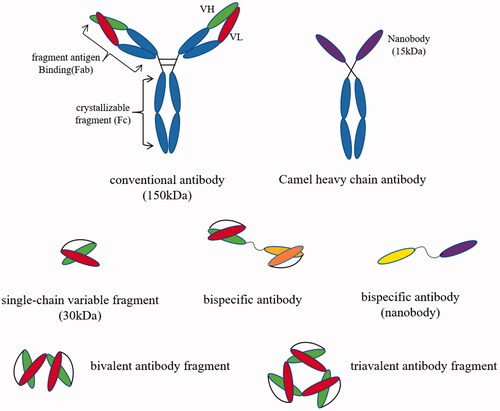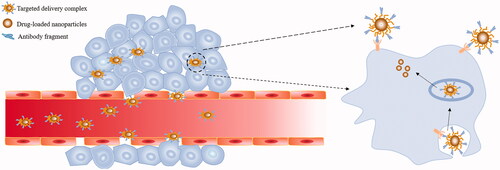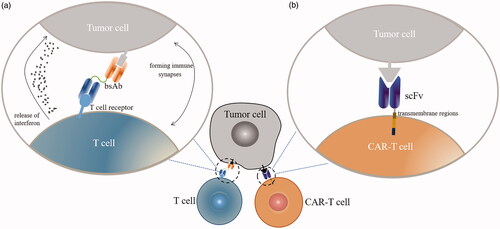Figures & data
Figure 1. Schematic diagram of traditional antibody and antibody fragment. (Include: mAb; camel heavy chain antibody; nanobody; scFv; bispecific antibody; nanobody bispecific antibody; bivalent antibody fragment; triavalent antibody fragment).

Figure 2. Targeted drug delivery system based on antibody fragments. Targeted delivery complexes that composed of antibody fragments coupled with drug-loaded nanoparticles enter tumour cells by antibody fragment-mediated endocytosis. Under the degradation of lysosomes, the complex releases anti-tumour activity drugs to eradicate tumour cells.

Figure 3. Antibody fragments apply to tumour immunotherapy. (a) Bispecific antibodies help to construct immune synapses between immune cells and T cells, thereby activating T cells to eradicate tumour cells. (b) After the scFv-based CAR-modifies T cells, T cell-deficient recognition of tumour antigens can be avoided and T cell activation is promoted. Engineered CAR-T cells can specifically and efficiently kill tumour cells.

